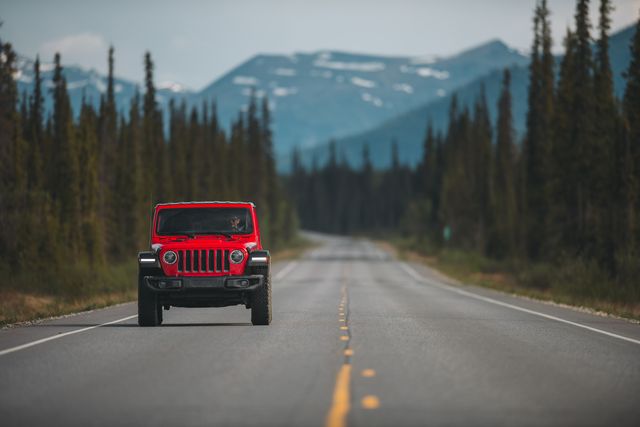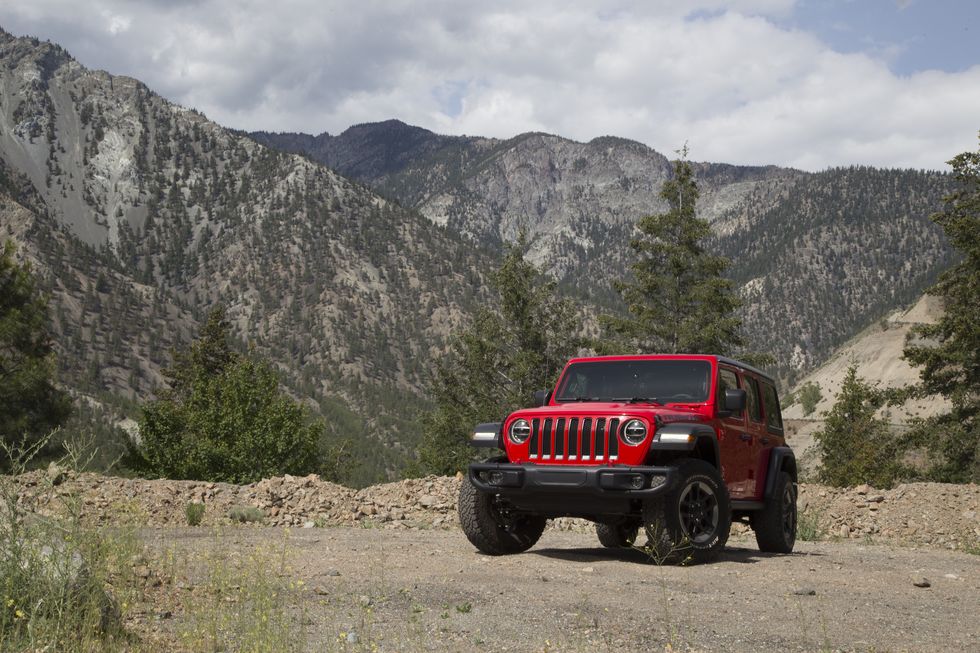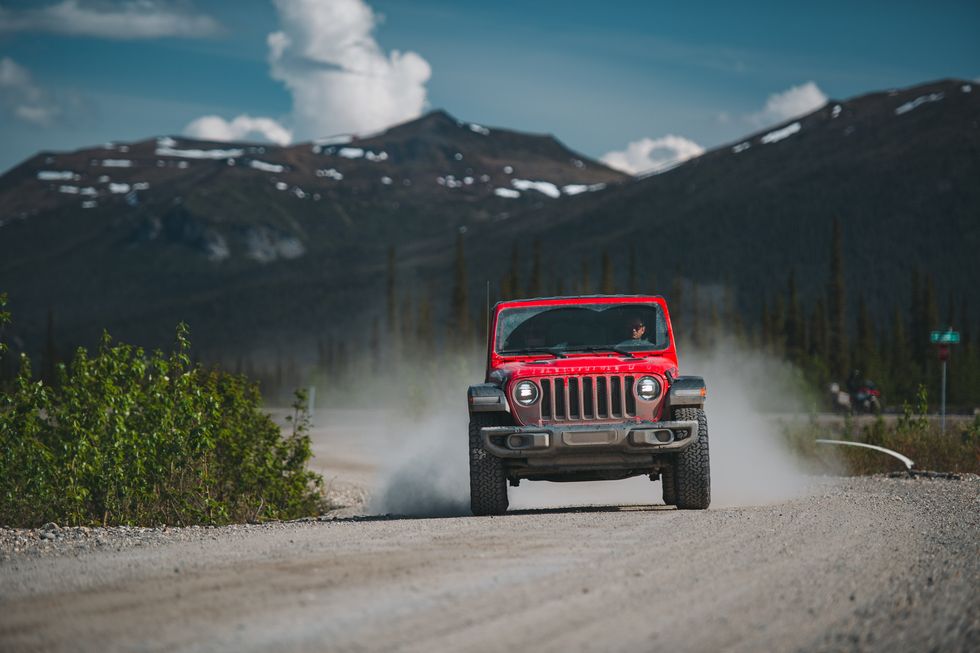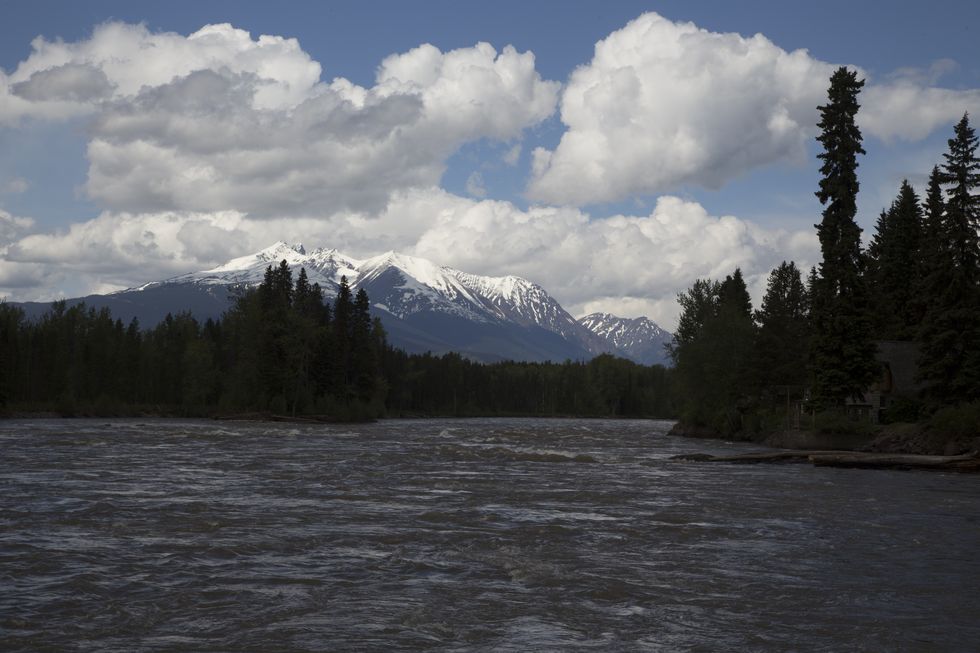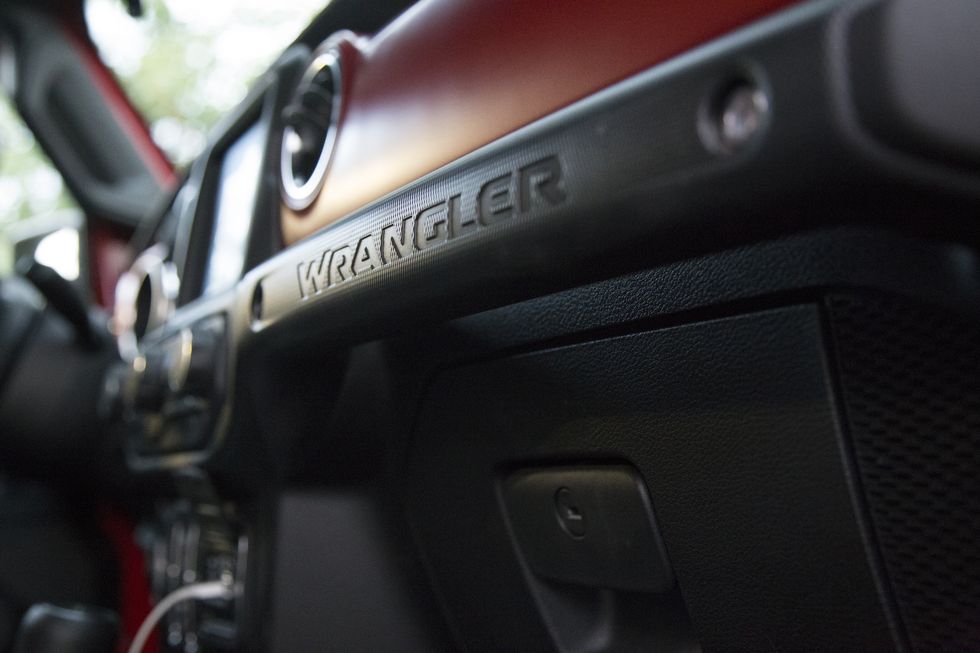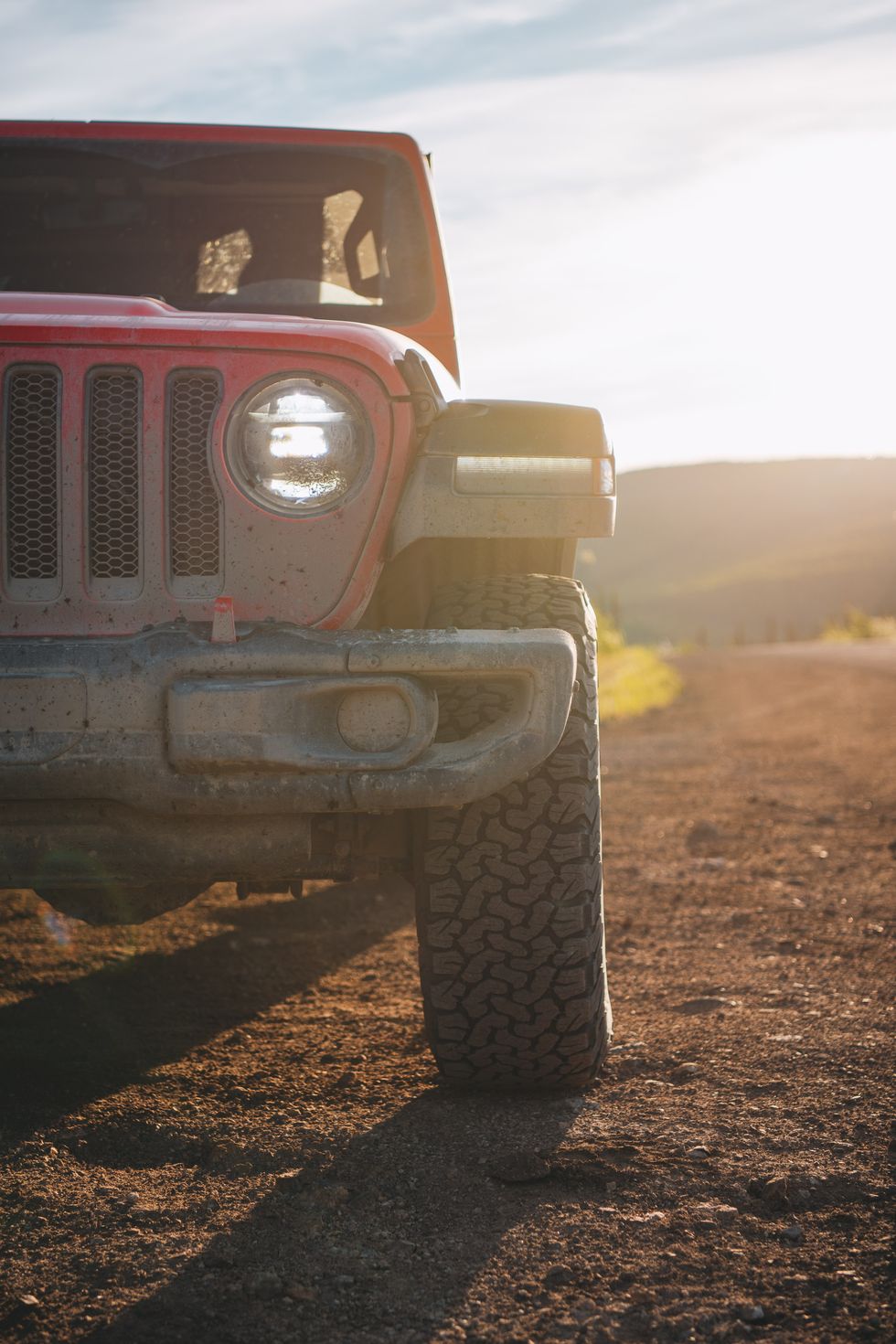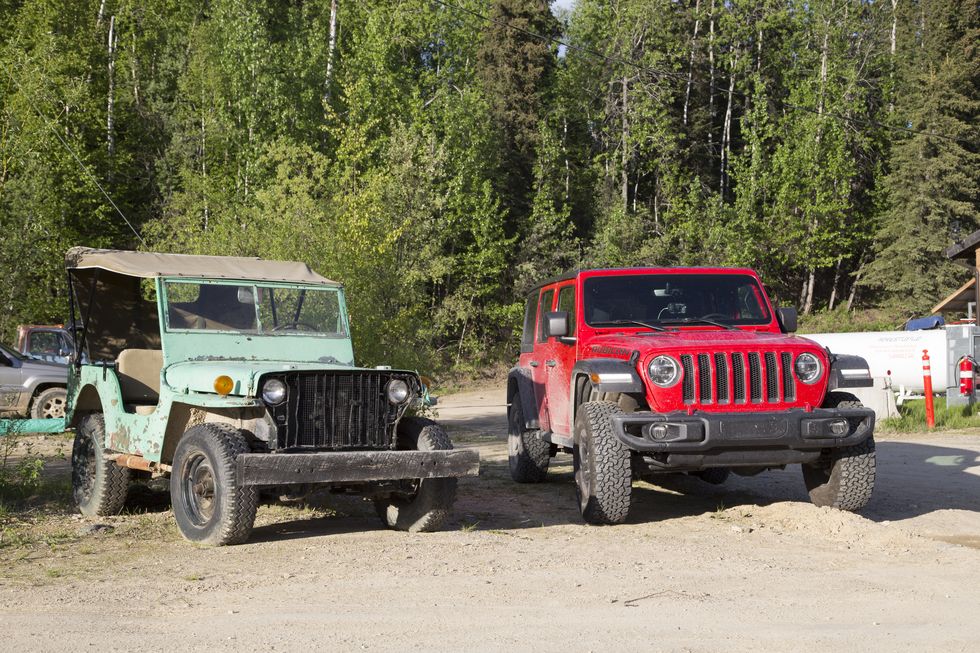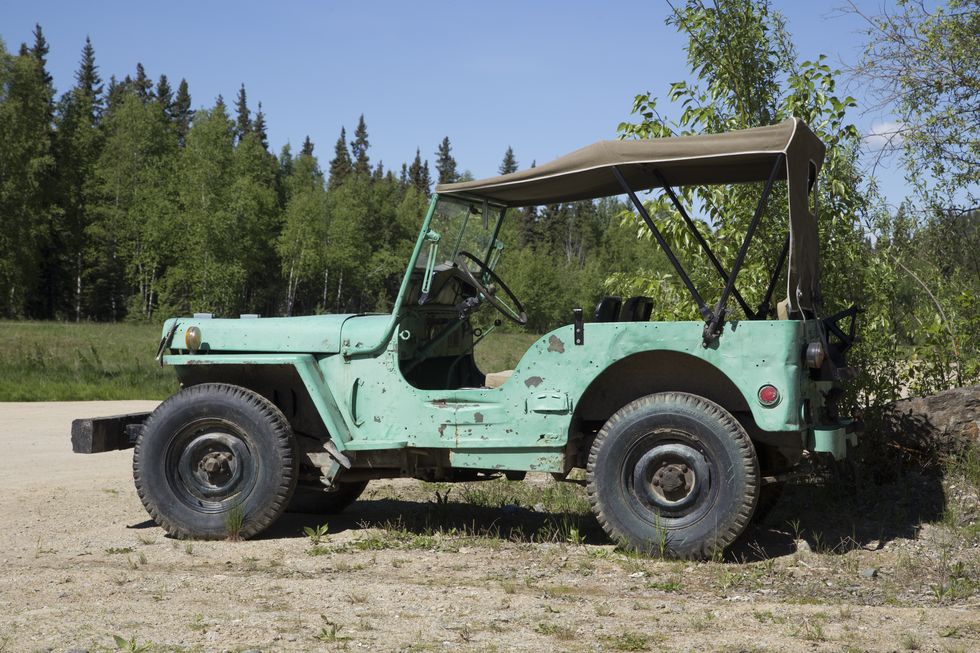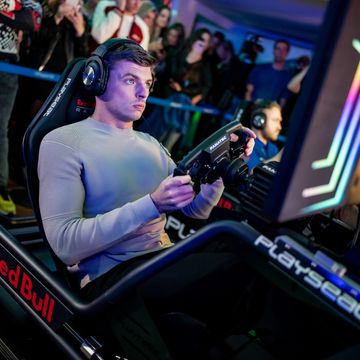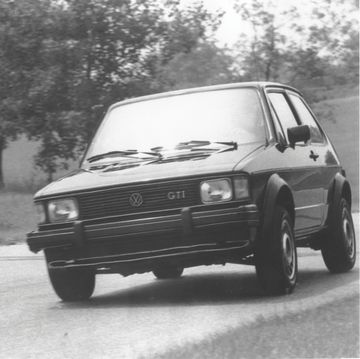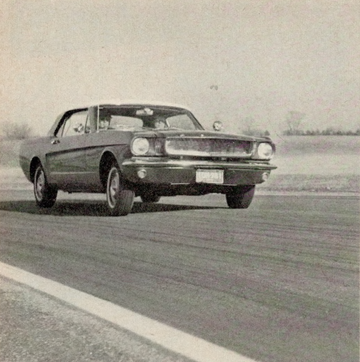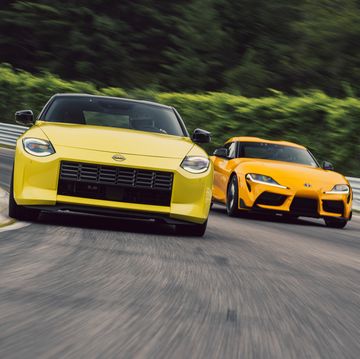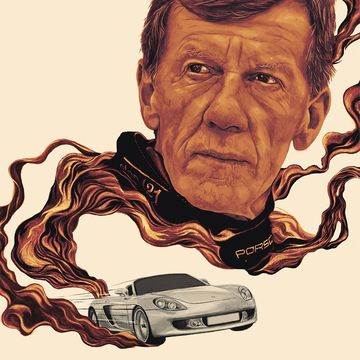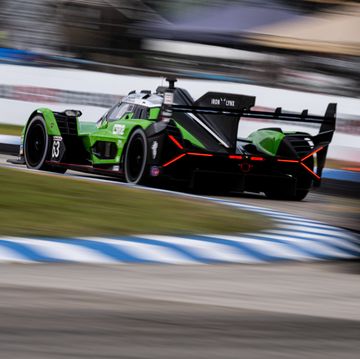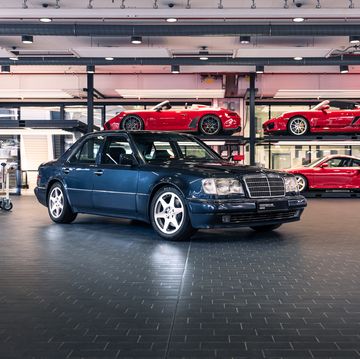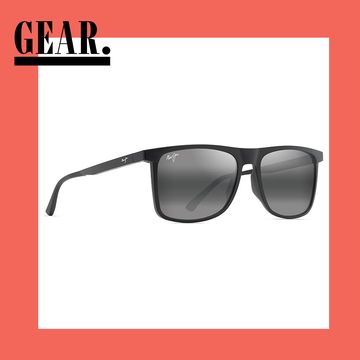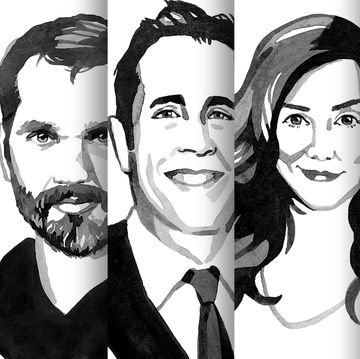My route was littered with service roads. Narrow offshoots veering up the sides of mountains, quiet paths through the trees to the rivers in the valleys below. The kind of roads that don’t show up on maps. Constant invitations to do Jeep things, to drop it into four-wheel drive and discover. But I had to keep turning them down; I was on a mission. I had four days to get this 2018 Wrangler from Seattle to Fairbanks, Alaska.
For two days, I resisted the urge to explore.
On the third day, I caved. That just happens up here, like it or not. Your eyes spend as much time as safely possible looking at anything but the road. The Wrangler helps—wanna see the mountains looming on all sides? Take the roof off.
Sitting on the hood of the Firecracker Red Rubicon, feet on the bumper, I marveled at the view before me in total silence. Towering mountains in all directions, green and rolling at the bottom, giving way to barren, rocky peaks capped with snow that never melts. A giant, sapphire-blue lake tucked at the base of the range to my left. It was breathtaking; but so was the whole trip.
It takes no less than 41 hours of drive time to cover the 2,159 miles between the Seattle-Tacoma International Airport and Fairbanks, Alaska. The route bisects the Canadian province of British Columbia and part of the Yukon territory above it. Looking at the route on Google Maps shows a long, winding blue line traversing huge blocks of green. North of the Canadian border, cities are few and far between. Calling them “cities” is generous. It’s a long, lonely trip over unforgiving land that will completely redefine your perception of natural beauty. The Jeep Wrangler is perfect for it.
Day Zero
Comments started before the drive even began. I spotted a local handyman eyeing the Jeep when I picked it up outside Seattle. He ambled over, hands in the pockets of his tattered, dirty jeans.
“Used to have an old CJ. These things have changed,” he said gruffly.
He’s not wrong. For 2018, the Jeep gets an optional 2.0-liter turbo four-cylinder, a nice alternative to the standard 3.6-liter Pentastar V6. A 3.0-liter diesel option is coming in 2019. It also gets an 8-speed automatic to replace the archaic five-speed; a six-speed manual is available only with the V6. To save weight, many of the body panels are aluminum or magnesium. A few other styling tweaks round out the new generation.
Despite this being an all-new Wrangler, it’s basically impossible to mistake it for another make or model. That’s the box in which the Wrangler engineers and designers are forced to operate–it has to be new, but it can never look new.
But the handyman wasn’t talking technical changes or cosmetic updates. A Wrangler parked in a Seattle suburb is probably not what one thinks of when pondering Jeep’s brand ethos. Vehicles with this much off-road capability used to feel out of place in sprawling urban areas. His old CJ probably was. But today’s four-door Wrangler makes a decent family hauler. The Wrangler grew up, and buyers embraced it. Some 80 percent of Wranglers sold today are four-doors.
Even as it became more common in urban areas, the Wrangler never excelled in them. Case in point: highway driving. The JK-generation (2007-2018) Wrangler was notorious for bouncing between the lane lines, requiring constant wheel adjustment through numb steering to keep it from wandering. And, at the time, the JK was the most advanced Wrangler ever.
Heading east across Lake Washington on I-90 in Seattle, I was pleasantly surprised: I could drive on the highway with one hand. That wriggle isn’t gone completely, and what little is left is more noticeable on the four-lane highway headed through a tunnel, where spacing and placement are paramount. But it’s forgivable. A highway hero the Wrangler is not. We don’t need an apology.
Day One
“This your rig?”
The stranger walked up, clearly interested in the Wrangler.
My response was nigh-on robotic—I’m a journalist. The Jeep belongs to Jeep. His eyes grew wide with envy as I explained my task. He said he had a Wrangler back in Hawaii. Misses it every day. Is the new one worth it, he wonders? “Initial impressions say yes, but I’ll know more in a couple of days.” He mentioned the enterprising spirit Jeeps can foster in their drivers. I didn’t quite get that yet.
Even the border patrol guard took interest in the Wrangler. Answering yes to “is that the new Wrangler” more than a handful of times that first morning made it clear that the changes added up.
Not long after crossing into British Columbia, the highway began to trace the rise and fall of the foothills of the Canadian Rockies. When I stopped for lunch, an older gentleman approached me, smiling.
“Always did like the look of these Jeeps,” he said with a thick British accent. “How does it drive?” I commented on how not-tired my arms were. Credit small but significant updates to chassis and suspension tuning and a new electric power steering setup for the improvement. “It’s not past mankind to figure out how to make that work,” he remarked. “No, I suppose it’s not,” I replied.
My route danced along the Fraser river, passing through sparse bits of civilization. Often, I found myself leaning out the window to see the sides of the cliffs and mountains that towered over the ribboning pavement.
Eventually Canadian Highway 1 veers right, heading east towards popular travel destinations like Revelstoke and Banff National Park. I didn’t turn right, instead continuing north along Route 97, which meanders into a valley between two massive mountain ranges.
Jeep’s attempts at making the Wrangler more aerodynamic, like a more raked windshield and smoother body panels, seem almost farcical. Wind noise is still a key part of the experience. Rather than pretend it annoyed me, I invited in more.
I pulled off the front portion of the hardtop, exposing the front seats to sunlight and the world around me. Even here in the foothills, you don’t want to be inside. What better vehicle to enjoy this glorious landscape in than one purposefully built to allow its occupants to enjoy the open air? Most of my day was spent sticking my hand out of the roof and pondering excuses to move to B.C.
My resting place for the night was Prince George, the largest chunk of civilization in the middle of the Yukon territory. The attendant at my hotel noticed the Jeep out front, and asked if he could come take a closer look.
“I’ve always wanted to do a trip in one of these where I just get in and drive to nowhere,” he said, wistfully. “I have a friend with one that’s lifted, light bars, winch, the whole thing. He’ll disappear for days—he only seems to come back when it’s either too muddy or he’s satisfied with what he’s seen.” I explained what I was doing. He laughed.
“Yeah, pretty much a trip like that.”
Day Two
The Cassiar Highway was completed in 1972, connecting the Yellowhead Highway in B.C. with the Alaska highway just inside of the Yukon Territory. It slices through the Cassiar Mountain range, bobbing and weaving in and out of the shadows of mountains so green the hue tints your eyesight. It’s 450 miles of scenery that couldn’t be prettier. I picked up where I’d left off the night before, responsibly rubbernecking at the splendor around me.
Occasionally, the mountains in the foreground staggered just right, revealing the larger, more treacherous peaks behind them. They dug into the underside of the gray sky, wringing the clouds like sponges for fresh coats of snow. It was a dreamscape.
Each valley was its own world. Some had blue lakes so vivid and clear it was hard to resist stopping for a swim. Others were shrouded in dark clouds, getting drenched in late spring rain visible from miles away.
For all the beauty, there was no shortage of reminders that this is a harsh land where only the toughest spirits dare settle. Shells of old vehicles, long since abandoned and parted out, dot the few flat spots along the roadside. Small, weathered shacks stand as monuments to failed attempts to call the place home. Barricades, folded back for now, show that large portions of the road are closed off for parts of the year. Mother Nature is still the boss.
Up here, everything has a utilitarian purpose. Nearly every vehicle is a pickup. If it’s not, it’s likely just passing through. This isn’t home for the Subaru with the roof-mounted storage bin, or the Camry packed full of snacks and pillows. At each stop, I parked alongside trucks that were beaten and dented, each driven by someone who looked equally weathered. Worn faces, rough beards, tattered jeans, battle-scarred boots and flannels. Out here, surviving is everyone’s full-time job.
Fuel economy has never been the Wrangler’s strong suit. But the new eight-speed is lightyears better for on-road behavior, and gives an extra two mpg of combined fuel economy. Since gas stations along this route can be few and far between, the rule was, if I saw a gas station, I stopped and topped off.
Every time I filled up, I could feel their gaze. Everyone could tell that I wasn’t from here. Still, I caught many of them stealing glances at the Jeep, grins creeping onto their faces. It struck me as out of the ordinary. As I continued into the last few hours of the long day, I wondered: What about a brutish Jeep Rubicon makes no-nonsense people with no-nonsense trucks smile?
Jeep’s origins lie in utility. The first ones arrived in crates, invented to help win a world war. That’s a far cry from what we see on the roads today. What changed? The capabilities are still there—in fact, they’ve improved exponentially. I thought back to when I picked this Jeep up in Seattle. I encountered lots of Wranglers in the city. They’ve become a lifestyle object.
It was starting to come into focus. Unlike other vehicles with similar genealogies and capabilities, Jeeps today are still commonly used in the same way they always have been. The Land Rover Discovery, for all its proficiency, is more likely found in wealthier Chicago suburbs than it is slinging mud onto its doors. The G-Wagen is still a stout overland vessel. But this isn’t Sunset Boulevard. The way folks use Wranglers still holds true to the vehicle's roots, far more than other vehicles of the same vein. It’s the unpretentiousness that the folks up here in the middle of nowhere appreciate.
The front desk clerk at Tatogga Lake Resort built the place about ten years ago. We sat in the shadow of a giant stuffed moose in the small reception area/meeting space/dining hall and discussed the beauty around us. It became clear that he adored the resort because of where it sat on the map. He loved when guests would come and just marvel at things they’d previously only seen in pictures.
The clouds descended the peaks and spilled down into the valley where the resort sat. It was quiet, almost eerily so. The scale of that big silent space was both intimidating and humbling.
Day Three
Nearing the province line between the Yukon and B.C., the landscape started to change. This far north, permafrost covers the low-lying areas, thawing into a swampy muck for a few months each summer. Dead evergreen trees abounded. Only their tall, thin trunks still stand, like toothpicks in a birthday cake. The mountains in the distance were covered in more snow, smoother at their peaks, like God had slathered them in Cool Whip.
Crossing into the Yukon, I gassed up at the only interchange, marking the end of the Cassiar and the start of Highway 1.
Better known as the Alaska Highway, Highway 1 was the result of a 1942 executive order to build a military road to Alaska. Tens of thousands of troops, civilian engineers, and pieces of equipment poured into Canada to build 1390 miles of road through some of the most unforgiving land on earth.
Blasting down the road, jogging over some hills and wandering around others, I thought about when the road was under construction. The Willys MB, the founding father of the Wrangler family, was built from 1941 to 1945. I couldn’t help but wonder how many of those military Willys were sent up here, helping to build one of the most ambitious pieces of military/civilian infrastructure in American history.
The Jeep’s capabilities have always been essential to its legend. To be up here, traveling along a road the original Jeep helped build, seemed fitting.
Day Four
My latest innkeeper also had his share of Wrangler experiences. He told me about a man who stayed at this bed and breakfast back in the fifties, driving an original Willys from the Midwest on his way up to Fairbanks.
I asked him why I didn’t see more Wranglers up here. They certainly aren’t lacking in capability, so why aren’t they as popular as I thought they would be? “There’s no delivery trucks up here,” he explained. “If you buy something big and want to get it back to where you live, you bring it back yourself. Jeeps might be the most fun, but they aren’t the most practical.” More reason for Jeep to hurry up and introduce a pickup.
At the Alaskan border, the customs agent and I talked suspension travel and ruggedness. He motioned to his Tacoma, lifted with larger tires and a light bar. “If I didn’t need a truck with a bed, it would have been a Wrangler,” he laughed.
Heading west from the border, Highway 1 showed signs of age. The pavement was cracked and uneven, tossing the Jeep this way and that. I slowed to a manageable speed and looked left, to the largest mountains I’d seen yet, blotting out the view of the Gulf of Alaska. Looking at them never got boring. The constant reminder of how small I felt was the perfect escape from daily life.
About 30 minutes south of Fairbanks, a gas station caught my eye. An original Willys Jeep was parked beneath a tree in a dirt lot. It belonged to the guy who settled the area, long since passed away but whose spirit was still felt by the people now living on or near his homestead.
I parked the Wrangler next to the haggard old rig and stepped back a few yards. It was laughable to look at the size difference. The entire Willys seemed like it could fit in the cabin of the JL Wrangler. The top of the hood barely came up to my fender.
But the resemblance was undeniable. The iconic seven-slat grille, the round headlights, the flat windshield, the spare tire hanging off the tailgate. A cartoon silhouette of the original Willys pops up all over this new Wrangler–the shift knob, the corner of the windshield, the wheels. Subtle reminders of how proud the Wrangler family tree is.
Heritage can be a tough thing to preserve in today’s automotive world. The Wrangler’s design is so beloved that news of even the slightest alteration brings nervous hand-wringing. But here, parked next to the founder of its bloodline, the Wrangler’s heritage was crystal clear.
The Jeep Wrangler defines an entire category of vehicles. Few modern machines can match its off-road capability, looks, and history. People refer to non-Jeeps as Jeeps, simply because the Jeep was the original SUV. It’s the Kleenex rule: if the original is good enough at its purpose, its name becomes a generic term. Through the years, the vehicle improved massively, but its roots were never obscured. The rugged smiles of folks gassing up battered trucks in the middle of nowhere at fuel stops along the way suddenly made sense.
The Wrangler is optimistic, largely because of what can be done, seen, and experienced with it.
It offers a means to get to somewhere else, somewhere not here. You want to climb that service road? Go ahead—the Wrangler probably won’t break a sweat. You want to crawl down into that river bed, just to check it out? Why not? It imbues confidence and curiosity in its owners, the characteristics necessary to do things like build a highway through nowhere, or to get away from everything and make the unknown known.
It’s also one of the few vehicles seemingly everyone has a connection to. A friend, a family member, an acquaintance—they all have stories about a time they got it stuck, took it off the trail, went and saw something they'd never seen before. It's one of the few automotive experiences that transcends age, location, or context. Seeing one sparks memories.
Special seems too weak an adjective.
At the end of my journey in Fairbanks, the Jeep sat covered in mud and bugs acquired over 2000-plus miles of discovery on roads built by its ancestors. I briefly thought about washing it before handing off the keys the next day.
Nah. The dirtier, the better.
